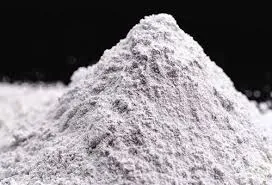
Sep . 28, 2024 09:18 Back to list
Understanding HPMC Grades and Their Applications in Pharmaceutical Formulations
Understanding HPMC Grades A Comprehensive Guide
Hydroxypropyl Methylcellulose (HPMC) is a synthetic polymer widely used in various industries due to its unique properties. It is a non-ionic cellulose ether that is soluble in cold water, making it a versatile ingredient in the pharmaceutical, food, and construction sectors. HPMC is produced in different grades, each tailored for specific applications. Understanding these grades is essential for choosing the right product for your needs.
What is HPMC?
HPMC is derived from cellulose, the main structural component of the plant cell wall. Through a chemical modification process, cellulose is turned into HPMC by etherification, which introduces hydroxypropyl and methyl groups. This modification enhances its solubility and performance in various applications.
Key Properties of HPMC
HPMC possesses several beneficial properties, such as
- Thickening Agent It increases the viscosity of solutions, making it a popular thickening agent in various formulations. - Film-Forming Ability HPMC can form thin, flexible films when applied to surfaces, offering moisture retention and protective barriers. - Controlled Release In pharmaceuticals, HPMC is used for controlled drug release due to its gel-forming ability upon hydration. - Stabilizer It acts as a stabilizer in emulsions, helping maintain product consistency over time.
HPMC Grades and Their Applications
HPMC is available in multiple grades, which differ based on their viscosity, degree of substitution, and solubility. Here are some commonly used HPMC grades
1. Pharmaceutical Grade This grade is primarily used in the pharmaceutical industry for tablet binding, coating, and controlled release formulations. It must meet strict regulatory standards to ensure quality and safety for human consumption. Pharmaceutical-grade HPMC is prized for its ability to enhance bioavailability and prolong drug action.
hpmc grades

2. Food Grade Food-grade HPMC is utilized in the food industry as a thickening and stabilizing agent. It is found in a variety of products, including sauces, dressings, and baked goods. Its non-toxic nature makes it safe for consumption, and it also contributes to the texture and mouthfeel of food products.
3. Cosmetic Grade In cosmetics, HPMC is used for its thickening and film-forming properties. It can be found in lotions, creams, and gels. Cosmetic-grade HPMC helps improve the texture and stability of products while providing a pleasant application experience.
4. Construction Grade In the construction industry, HPMC plays a crucial role as an additive in cement-based materials such as tile adhesives and stucco. It enhances workability, prevents sagging, and improves water retention during application, ensuring a stronger bond and better finish.
5. Industrial Grade HPMC is also used in various industrial applications, including paints and coatings. Its ability to modify viscosity and serve as a stabilizer makes it valuable in producing consistent and high-quality products.
Choosing the Right HPMC Grade
When selecting an HPMC grade, it is crucial to consider the specific requirements of your application. Factors such as viscosity, solubility, and regulatory standards play a vital role in determining the suitability of a particular grade.
- Solubility Ensure that the chosen HPMC is suitable for either cold or hot water based on your formulation. - Viscosity Different applications require different viscosities; therefore, it is essential to choose a grade that meets your intended performance. - Regulatory Compliance For food and pharmaceutical applications, always verify that the HPMC meets the necessary regulatory standards for safety and quality.
Conclusion
HPMC is a versatile and valuable material used across various industries. Understanding the different grades available and their specific properties can help you make informed decisions when selecting the appropriate HPMC for your project. Whether in pharmaceuticals, food, cosmetics, or construction, HPMC continues to play a significant role in enhancing product quality and performance. By carefully considering the application and required properties, you can leverage the benefits of HPMC to meet your needs effectively.
-
Versatile Hpmc Uses in Different Industries
NewsJun.19,2025
-
Redispersible Powder's Role in Enhancing Durability of Construction Products
NewsJun.19,2025
-
Hydroxyethyl Cellulose Applications Driving Green Industrial Processes
NewsJun.19,2025
-
Exploring Different Redispersible Polymer Powder
NewsJun.19,2025
-
Choosing the Right Mortar Bonding Agent
NewsJun.19,2025
-
Applications and Significance of China Hpmc in Modern Industries
NewsJun.19,2025







